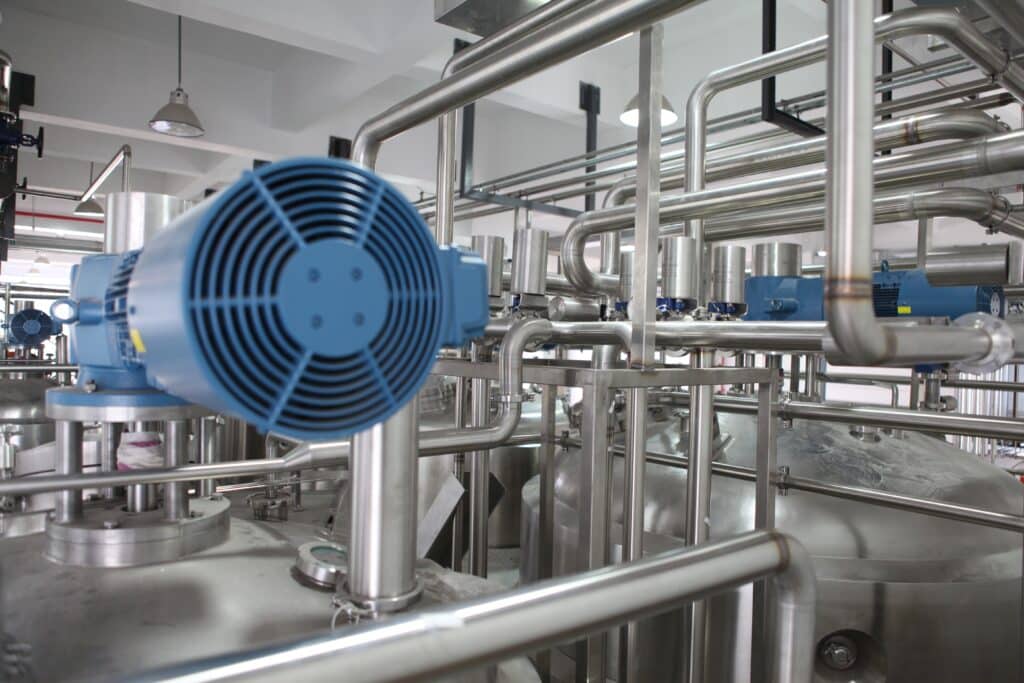Heat exchangers are essential to many industrial processes, as they help transfer heat from one medium to another. Selecting the right type of heat exchanger is critical for achieving optimal efficiency and performance in any system.
This article will discuss the different types of heat exchangers available and guide how to choose the best option for your needs.
We’ll also consider some key installation, maintenance, and safety protocols considerations. With this information, you’ll be well-equipped to decide which type of heat exchanger is best suited for your application.
IMAGE: UNSPLASH
Different Types Of Heat Exchangers
Heat exchangers are important components that are used to transfer heat from one fluid to another fluid. These devices are essential in many industrial processes, including power generation, chemical processing, and HVAC systems.
However, not all heat exchangers are created equal, and choosing the right one for your needs requires a good understanding of the different types of heat exchangers available. There are three main types of heat exchangers: shell and tube, plate, and air-cooled.
Shell And Tube Heat Exchangers
Shell and tube heat exchangers are the most common type and are used in a wide range of applications. They consist of a set of tubes inside a cylindrical shell. One fluid flows through the tubes, while the other flows through the space around the tubes.
These heat exchangers are easy to clean and maintain but can be expensive and take up a lot of space.
Plate Heat Exchangers
Plate heat exchangers are another common type used for applications where space and weight are a concern. They consist of a series of corrugated plates that are stacked together, and one fluid flows through the spaces between the plates while the other flows through them.
Plate heat exchangers are easy to install, maintain, and clean but unsuitable for applications with high temperatures or pressures.
Air Cooled Heat Exchangers
Applications where using water as a cooling medium is impractical or expensive call for using air-cooled heat exchangers.
They are made up of tubes connected by a series of fins, and the heat is transferred to the surrounding air by one fluid flowing through the tubes and another flowing over the fins.
Air-cooled heat exchangers are less effective than other varieties and have a limited cooling capacity, but they are simple to maintain and use little to no water.
When choosing a heat exchanger, it is important to consider factors such as temperature, pressure, flow rate, and the type of fluids being used. You should also consider the space available for installation and the cost of the heat exchanger.
By understanding the different types of heat exchangers and their advantages and disadvantages, you can make an informed decision and choose the best option for your needs.
Consider Your Process Requirements
When choosing the right heat exchanger for your needs, it is essential to consider your process requirements. Different heat exchangers are available in the market, each suitable for specific applications.
Therefore, it is crucial to understand your industry’s requirements and choose the appropriate heat exchanger to fulfill your processing needs.
Factors like temperature range, pressure, flow rate, and fluid type should be considered when selecting a heat exchanger. The heat transfer rate and efficiency of the heat exchanger should also be considered, as they impact the system’s overall performance.
A properly chosen heat exchanger can increase productivity, minimize energy usage, and optimize the processing of materials, resulting in cost savings in the long run.
Material That Is Compatible With Your Application
When choosing a heat exchanger for your needs, it is important to consider the material compatibility of the exchanger with your application. Different materials have different levels of resistance to corrosion, temperature, and pressure and should be chosen based on the specific needs of your application.
One common material for heat exchangers is stainless steel, which is highly resistant to corrosion and can withstand high temperatures and pressures. However, stainless steel can be expensive and may not be the best choice for highly corrosive fluids or high-temperature applications.
Another option is titanium, which is highly corrosion-resistant and can withstand high temperatures and pressures. Titanium is often used in applications that involve highly corrosive fluids, such as saltwater and is also commonly used in the production of medical devices.
Materials such as duplex stainless steel or superalloys like Inconel or Hastelloy may be used for high-pressure and high-temperature fluids. These materials have high corrosion resistance and can operate at high temperatures and pressures.
In addition to material compatibility, it is important to consider the design and construction of the heat exchanger. The heat exchanger’s size, shape, and orientation can affect its performance and ease of maintenance and repair.
The Efficiency Of The Heat Exchanger
The efficiency of a heat exchanger can have a significant impact on both its performance and operating costs. Several factors can affect the efficiency of a heat exchanger, including its design, size, and construction materials.
Heat exchangers with larger surface areas tend to be more efficient, as they can transfer more heat between fluids.
Another important consideration when evaluating the efficiency of a heat exchanger is its heat transfer coefficient. This parameter describes the heat transfer rate between the hot and cold fluids passing through the exchanger.
Heat exchangers with higher heat transfer coefficients are generally more efficient, as they can quickly transfer heat.
The construction materials used in a heat exchanger can also significantly impact its efficiency. For example, copper is a popular choice for heat exchanger tubing due to its high thermal conductivity and corrosion resistance.
However, copper can be expensive and may not be the best choice for applications where cost is a primary concern.
Finally, it is important to consider the operating conditions under which the heat exchanger will be used. For example, suppose the fluids passing through the exchanger are particularly dirty or corrosive.
In that case, it may be necessary to use more expensive construction materials or to incorporate additional features, such as a cleaning mechanism or corrosion-resistant coating.
Conclusion
Choosing the right heat exchanger for your needs is an important part of any process. It’s essential to consider all factors, including different types of heat exchangers, material compatibility with your application, and the efficiency of each type, before making a decision.
By ensuring you have the right fit for your specific requirements, you can maximize energy savings while increasing safety in operations. With these tips in mind, you should be well on finding the perfect heat exchanger for your project!
IMAGE: UNSPLASH
If you are interested in even more technology-related articles and information from us here at Bit Rebels, then we have a lot to choose from.


COMMENTS